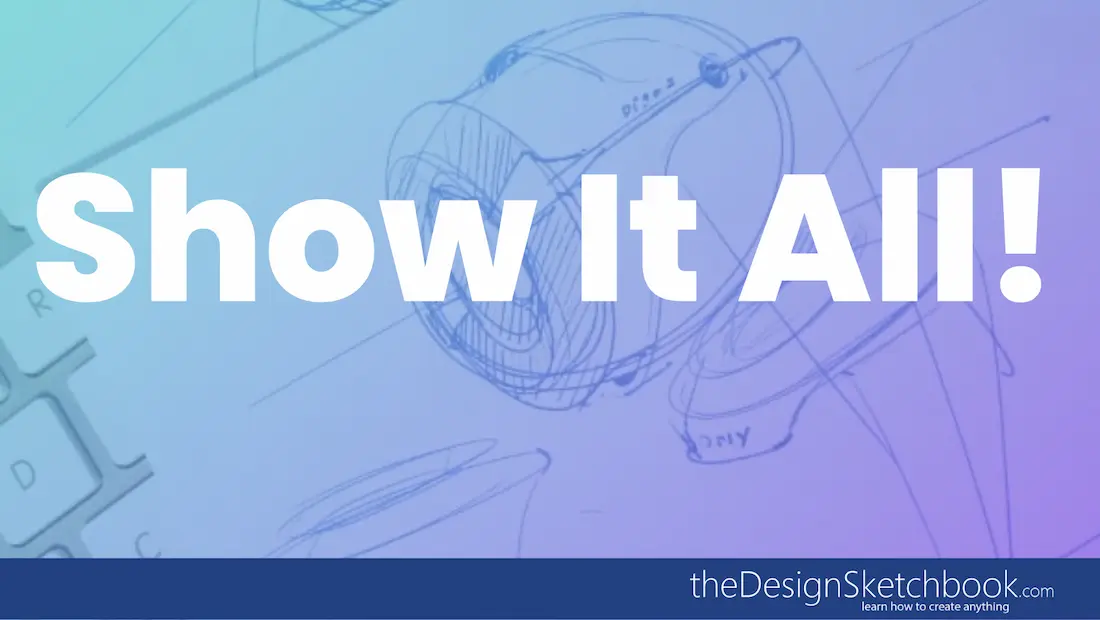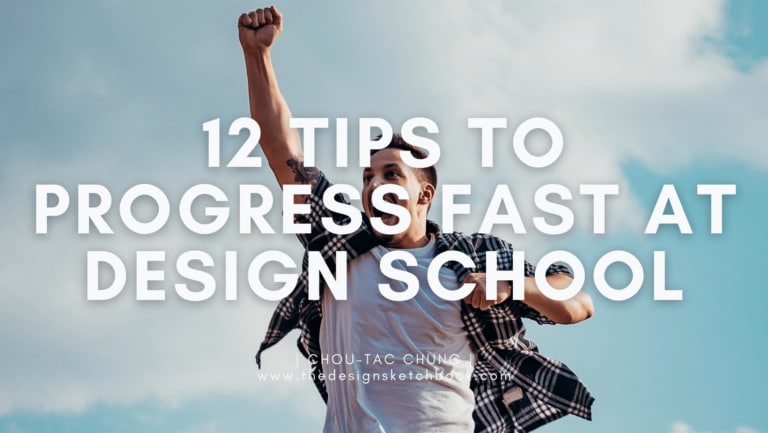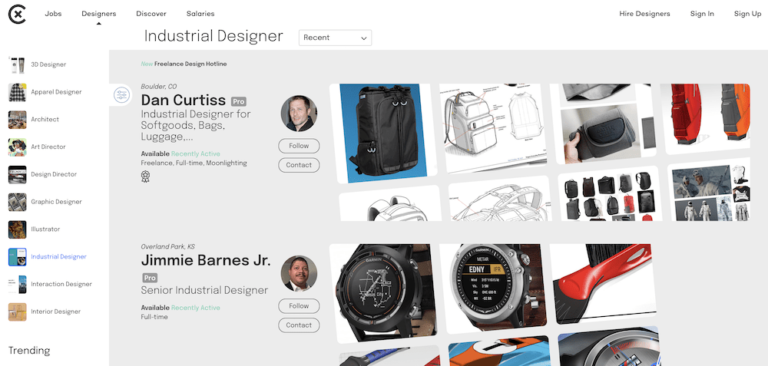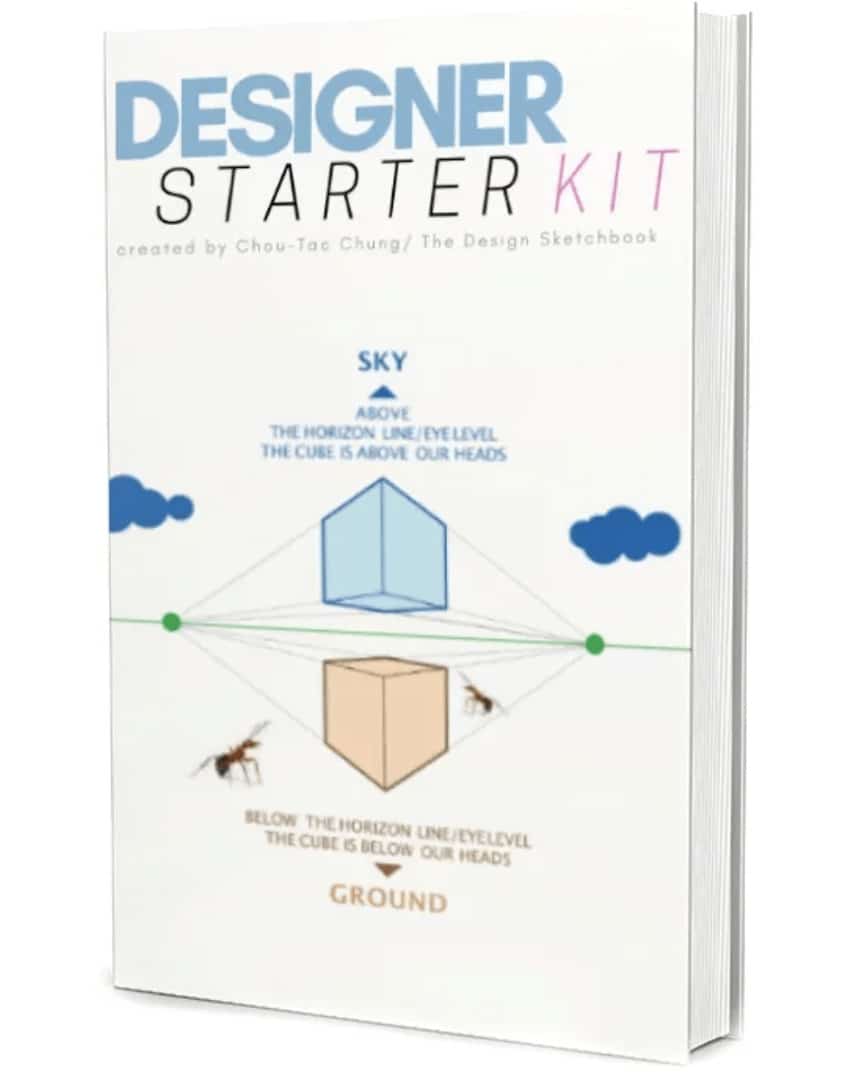
It’s 4:58 am and I can’t sleep.
I guess I am still a bit jetlagged after my 28-hour journey door to door from France to Singapore. I was in bed with my mind fully awake thinking about writing to you all. And I remembered something important from my school days—there was an interesting debate about:
Q: Should we show all our work in our portfolio?
The portfolio is the document that is even more important than a degree for a designer. It shows who you are and how creative you are so companies can predict how well you will do in their team. So take care of it, and do your best to produce a great one!
Give Your Portfolio the Best Chance to Promote You!
The pressure on it is so big that some students are afraid of getting their ideas stolen during interviews. So they purposely hide the best of their work.
To me, I would not recommend this “safe” strategy. As a student designer, you aspire to be a professional designer. To get there, you need to be daring and be ready to show ALL WHAT YOU GOT. I mean the best and most relevant of your work. Show who you are, and how you want the world to perceive you. They can be your interviewers or clients. And don’t slow your path of progress down by being afraid of being copied.
Most people you will meet during your career are nice people and are NOT interested in your work, but in THE WAY YOU WORK. Do you see what I mean?
Show how creative you are so you can be spotted, hired, and go further in your career. This is how you will build your own path and story. This is how you will meet great and skilled people that will pull you up. Use your portfolio as your best leverage.
A hidden work in a cupboard is equal to nonexistent. Give life to your ideas by showing them.
It’s kind of a bet. You may be copied, alright. But you have so much more to gain as a fresh element. Trust in people, and you’ll meet great ones who will trust you too. Be positive!
You are soon a fresh graduate; you have more to gain than to lose and your whole career ahead to prove your skills.
Note that the newer you are in the industry, the more chance you have to surprise people! As your portfolio doesn’t reflect years of experience but your high creative potential, use your freshness as your advantage. You want people to see you as:
- “Wow, that young candidate is promising!“
Your sketches and your ideas are the most valuable thing you could have. Don’t hide them in your cupboard so they collect dust. Instead, show them, magnify them, and let them shine in your portfolio! Earlier and at a higher level you start, faster you will grow.
By showing high-quality content as a student, you increase your chances to welcome great opportunities during your early years in the industry.
Make Your Growth Exponential by Targeting a High Level from the Start
Keep in mind that your first steps in the industry do not happen after graduation but during your first internship. Believe me, it will come earlier than you expect. You might not feel ready yet, so don’t wait. Work hard, and show your portfolio with pride. That’s how you build yourself since your very first internship. Do your best. Show your best! 🙂
A Copycat Story in my Design School!
If you are still not convinced and believe it’s risky to show your best work, remember these two things:
- Creative people will always get new ideas, no matter who copies you.
- Be proud of being copied! It’s a great indicator that you are doing great and inspiring people! Be a leader and keep inspiring challengers.
I invite you to read about Ora-Ito’s story—a famous and great designer who got well known and media coverage by publishing his work online of products using big brands. People thought they were actual products and tried to buy them—even though they were all virtual. Ora-Ito was like an “industrial design hacker” who influenced myself and other students at school.
Lesson I learned from a personal story of copycat:
When I was a student, one of my classmates copied one of my works I published online on Coroflot.com. It was one of my first sneaker designs with a sweet texture like shark skin. I was told about a classmate who copied it—and I didn’t react or try to find out who it was because I thought it was okay. School is made for learning, so it was fine to me.

What I didn’t know is that he included my work (the copy) in his portfolio—and it happened that we were both interviewed by the same company for the same internship on the same day.
The interviewer spotted the similarity and it went “pretty dirty,” as it didn’t reflect well on us or the school.
The other candidate confessed that he did it without negative intention and realized his mistake. It was a naive action, and he regretted it. He was just inspired and tried new things and thought it was okay on the spot.
He came to me to apologize.
I didn’t feel any anger—I didn’t want to blame anyone. I know how great a guy and creative designer he is. We all learn lessons from our mistakes. I hope he did…
The “after story” is that he was still selected for the internship despite the copy. I will never know if I was considered seriously or not, but life brought me to a different path—I went to Japan for a car internship at Daihatsu (Toyota).
A couple years later, I was hired at Adidas, the company that had interviewed us.
We can’t control everything in life. But having a positive attitude—even when it’s tough—brings back so much more.
If you are aware that a classmate copied your work and added it to his portfolio, don’t ignore it like I did. Try to find out who copied you and have a fair chat about it. Don’t hate or look for conflict. Your classmate might actually respect your work. Ask him to take responsibility and remove it from his portfolio.
Know how to forgive mistakes. Your friendship is more valuable.
If you can solve problems without conflict, you have acquired a great human skill as a designer.
I hope this is helpful. Have a wonderful day!
Cheers,
Chou-Tac
PPS: To know more about the course, remember to subscribe to the blog!
Related Articles about Student Portfolios














[…] that you’ve made the decision to learn, embrace the challenge fully. Make your sketches visible – don’t hide them or your mistakes. Each imperfect line is a step towards […]